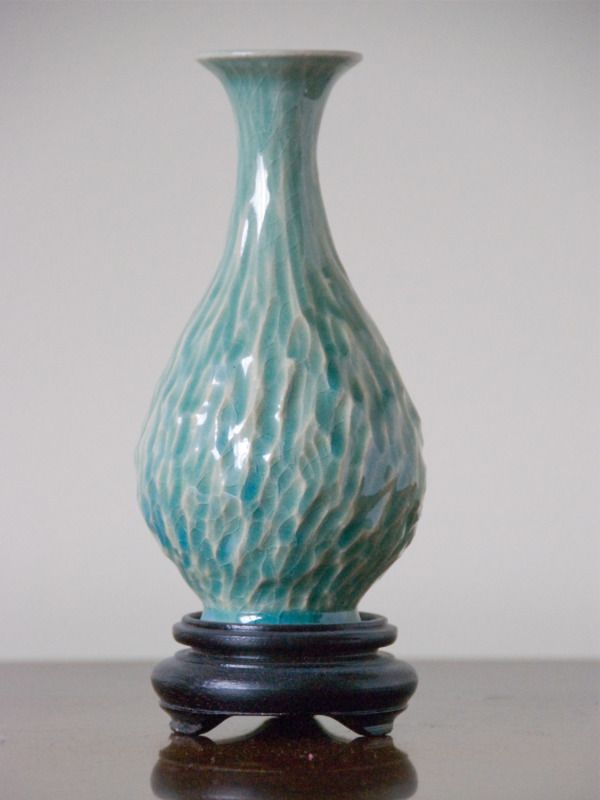photo: dj gilder
Thought I'ld recirculate some of my stuff, I have a lot more work from the past but no pictures - so until I get my hands on some clay and a wheel or get back to my parents' home and take a few more pictures I figured I'ld just repost and give a little background to each piece.
So this is one of my favorite, if not the most cherished, pieces from the stuff I've done. It's a small piece, about 6 inches in height, glazed in celadon. During the summer of 2005 I had the opportunity to go to Japan and as I now tend to do where ever I go is to seek out a pottery studio (Durham proved to be a bit difficult). After enlisting the help of a member from the lab I was working in, he found a studio with an english speaking owner who could help me in the little ways that prove to be invaluable.
This was my first encounter with a non-western wheel and style of throwing. Of course, my hands were trained in the U.S. In Japan, like Korea, the wheel turns clockwise whereas the wheel goes counter-clockwise in much of the "west" (there were other nuances when I worked with a wheel in Prague). Fortunately, the wheels had a switch to change direction.
So I threw this little bottle and a couple days later when it was time to trim the piece, I got lazy - I didn't want to center it and the process of centering a bottle takes a minute. So I decided to hand trim the bottle - this was the first time I took the care to hand trim the body in a faceted manner. It would soon become an aesthetic and style I would enjoy and repeat. What struck me while I was doing this was the process of taking something symmetrical towards something asymmetrical. Of course, the empty space that gives the bottle its shape is symmetrical but the carving provided subtle imperfections and a sense asymmetry.
In other words, hand-carving/trimming the piece took the intention of striving for perfection away from the aim of throwing (we usually begin by learning to throw a symmetrical, even, cylinder) and the aesthetic of a "perfect form." Instead, the carving provided asymmetry, imperfections, depth, and texture that would break the glaze such that the color would accentuate the carvings. It pronounced the beauty of subtle imperfections and the dynamics of being multifaceted.


No comments:
Post a Comment